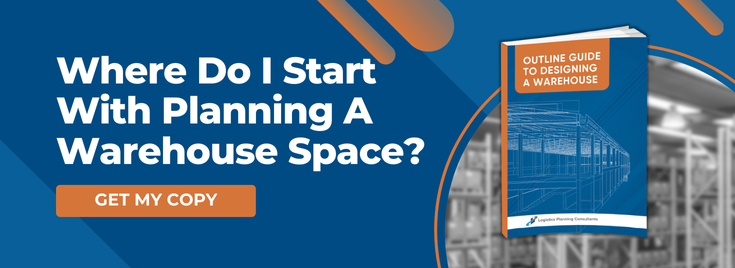
One answer is recession, or variations on that theme. It certainly isn’t the Roaring Twenties at the moment. But while the lack of certainty in what the economic outlook is may curtail growth plans and capital expenditure, it doesn’t mean that you can’t improve your logistics and supply chain operation. So where do you start and what do you look for? This blog looks at warehousing operations and offers some suggestions.
Your warehouse is probably not, at this moment, the result of a single master plan carried out in full detail and still serving the same customer demands. Even if there was once a coherent design, now it is more probably the result of answering 1000 questions. These are along the lines of ‘where do I put this SKU?’, ‘what goes in this pick location?’, ‘where is the customer return?’, ‘I haven’t got enough marshalling, where is the container load going that I bought cheap?’, ‘I have got a special offer; we are only going to use 5 carriers,’ and so on. Each question and decision can have an impact on your efficiency and productivity.
The bigger questions might merit thought and a considered answer, but others might be variations of quickly replying ‘Put it there!’ (subtext: ‘I am too busy, go away.’). If that isn’t the optimum place and it becomes its standard location, you have built a little inefficiency into your operation. Overtime and enough questions and you have scope for improvement. This may be improvement in storage and product location, or it may be in productivity and efficiency.
Either way, the place to start is with a Review or Audit to establish what could be achieved and what the benefits would be. There are other points to consider, such as: how to make the changes in a working facility, a program, identifying costs and suppliers, if new equipment is required. If you do not have the expertise, resources or time to undertake the Review yourself, consider looking for external support.
It may not be necessary to undertake the review in one go; it can probably be conducted in stages. You can start by looking at some key areas, which will give you some idea of
where opportunities lie.
Space Utilisation
- What function and who is using what space and when are they using it? Map it out and include the routes between areas and the set down and marshalling points.
Cube Utilisation
- Is the height within the building being used? Typically, racking will be using the height of the building, but other functional areas are unlikely to.
Material Flows
- Work out your material flows and apply to your space utilisation map. Indicate your primary flows and as well as your secondary flows.
Summary
- Many operations have too much space allocated to storage at the expense of marshalling and processing areas, which leads to inefficiency. Re-designing your storage to increase the storage density will help.
- Using the space above your head makes sense, but only with the right equipment -moving product up and down can be inefficient if the flows are not integrated.
- Distance travelled impacts your costs, and getting the flows right and proportionate to the operation will make life easier, as will reducing the number of times something is touched and moved. It is all about the right products in the right places.
If you require assistance, LPC has undertaken many reviews and audits and can identify the opportunities that will take you forward.
Image Source: Canva



